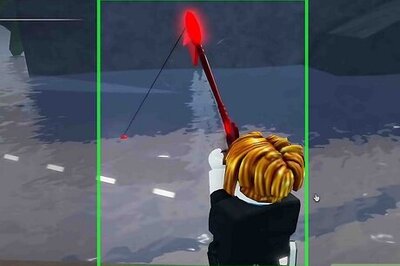
views
Anti-Chinese protesters in Tibet are facing arrest after a midnight deadline for them to surrender passed.
Shops, schools and businesses were open Monday in Tibet's capital, Lhasa, but tensions remained high throughout the territory and three neighboring provinces after days of deadly clashes.
Death tolls from the violence vary. Exiled Tibetan independence campaigners say at least 80 people died while Chinese authorities put the figure lower.
According to one Western journalist in Lhasa, the fatalities included both Tibetans and the ethnic Han Chinese who were the target of much of the violence.
Xinhua reported Monday that 160 locations in Lhasa were burned by rioters, including "banks, a press establishment, shops, schools and hospitals."
The state-run news agency quoted police in Tibet giving protesters a deadline of midnight Monday "to stop their criminal activities and offering leniency to those who surrender themselves.
"Those who surrender and provide information on other lawbreakers will be exempt from punishment," Xinhua quoted a police notice as saying.
On Sunday, exiled Tibetan spiritual leader, the Dalai Lama, condemned China's action in his homeland, accusing Beijing of "cultural genocide."
James Miles, a reporter for The Economist who arrived in Lhasa just before the violence began last week and has been allowed to stay, told CNN Monday that Lhasa was now quiet but damage was evident throughout the city.
Chinese security forces maintained a strong presence, checking identification papers of people on the streets, Miles said.
The number of people killed Friday - and which side they were on - remained in dispute, but Miles said it appeared the dead included Tibetans as well as Han Chinese who operated businesses there.
In a news conference in Beijing on Monday, Champa Phuntsok, the head of Tibet's regional government, blamed the violence on "a small group of separatists and criminals" who take their lead from exiled followers of Tibet's spiritual leader, the Dalai Lama.
Phuntsok said their goal was to destabilize Tibet "at the critical and sensitive time that we are preparing for the Olympics."
"There are 13 common people who died in the beating, burning and smashing in the riots," said Phuntsok. "They died of fire, asphyxiation and beating. Some of them were set on fire by rioters and died in the burning."
He said Chinese police did not fire their guns or use anti-personnel weapons against the Tibetans even tough the Tibetans wounded 61 police officers, six seriously.
PAGE_BREAK
"The rioters beat a patrolling police officer until he got into coma, and rioters cut out a piece of flesh, as big as a fist, from his buttock," Phuntsok said, according to a report from Xinhua.
Tibetan exiles described a much more violent response by police.
A Xinhua story published Monday said the protesters had "indisputable links to peace-preaching Dalai Lama."
The Dalai Lama, in his own news conference Sunday, denied inspiring the protests. He accused the Chinese of "intentional or unintentional... cultural genocide" in Tibet.
Tibet is officially an autonomous region of China, but the Dalai Lama said that Tibetans are treated by the Chinese as second-class citizens in their own land. He said they need full autonomy to protect their cultural heritage.
Since Tibet fell under Communist Chinese control in the 1950s, Han Chinese have moved into the province to participate in the government and operate businesses.
Miles reported seeing incidents Friday of Tibetan crowds attacking Han Chinese residents with stones. He said many of the businesses burned by protesters belonged to Han Chinese.
Violent protests were reported at or near Tibetan monasteries outside of Lhasa and in three other nearby Chinese provinces on Friday and in the days since.
Tibetan monks at the Labrang Monastery in Xiahe, Gansu province - 750 miles from Lhasa - apparently staged a protest Friday and Saturday that Chinese security forces acted quickly to stop.
Spence Palermo, a American who was filming a National Geographic documentary at the monastery, said Chinese officials banned his crew from returning to the monastery Friday. They were suddenly rushed from their hotel Saturday as a "seemingly endless convoy" of Chinese troops headed toward the monastery, he said.
Newsweek magazine reported Monday that as many as 4,000 monks and lay persons clashed with police near the monastery Friday and Saturday.
Tibet Watch, a group based in Dharamsala, India, told CNN that 34 people have died in the Nwaga County area of Sichuan province in western China. The dead include women and children, the group said in an e-mail, adding they were killed by Chinese police attempting to stop the protests.
Eight bodies - including the bodies of two monks - were brought to the Nagaba Kirti monastery, the Tibetan Center for Human Rights and Democracy in Dharamsala told CNN.

















Comments
0 comment